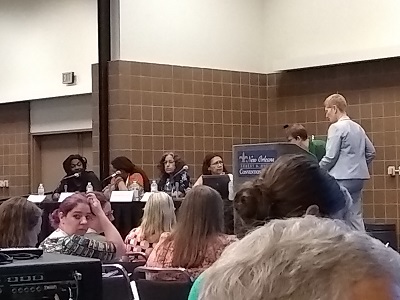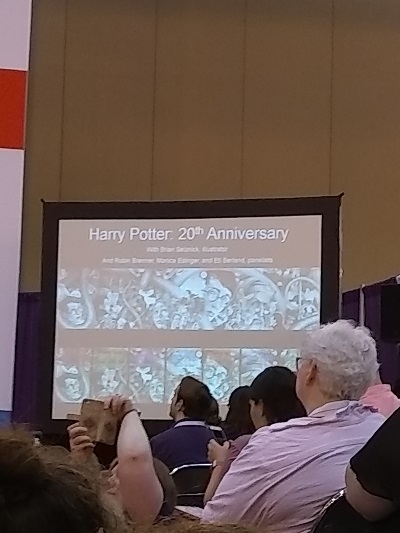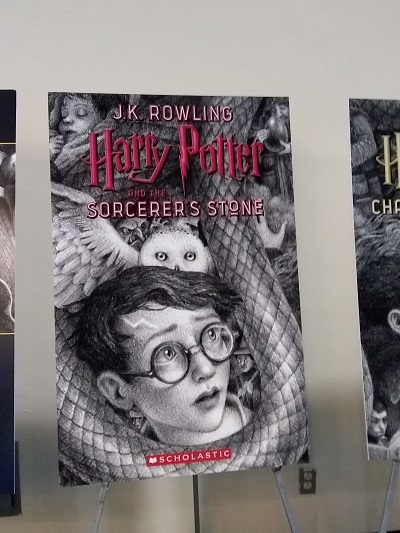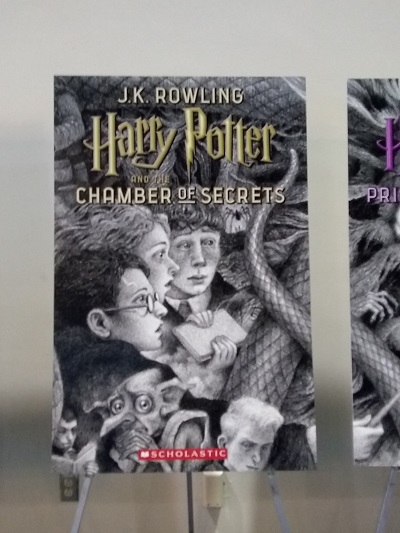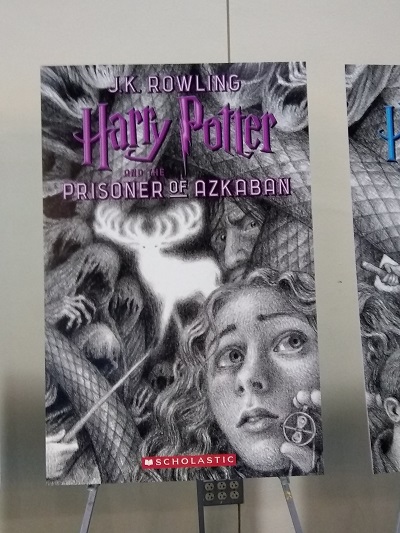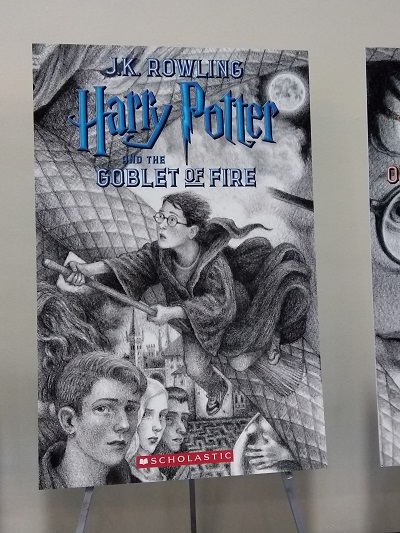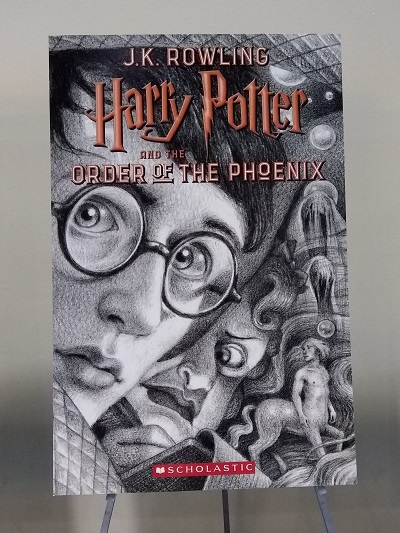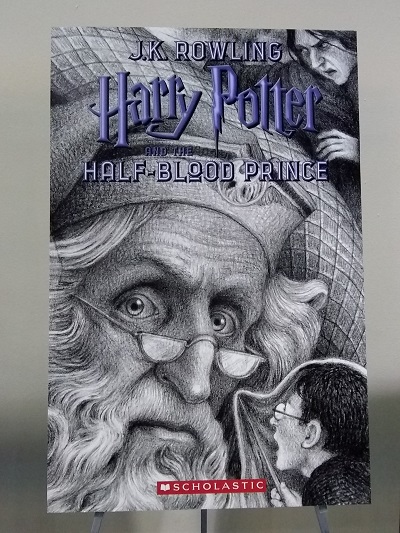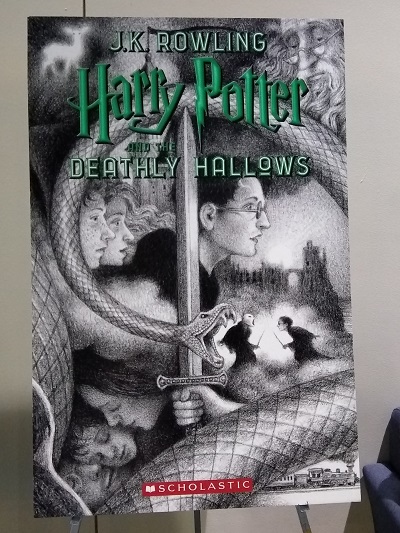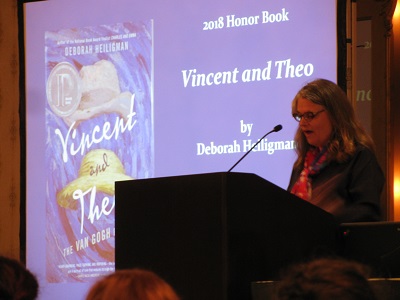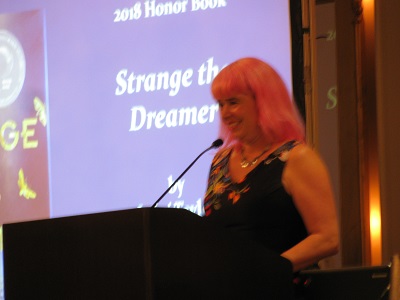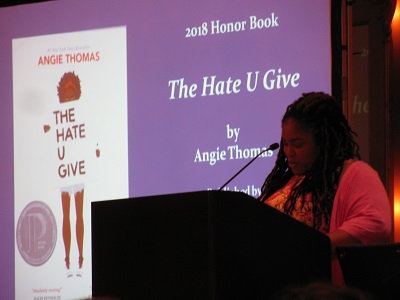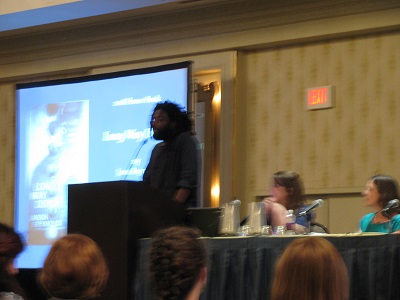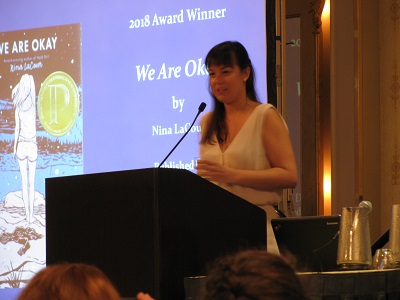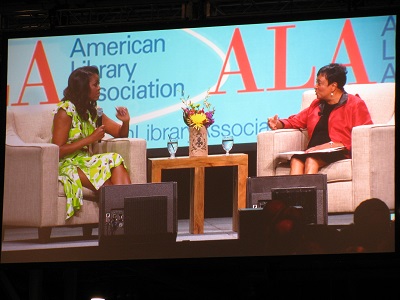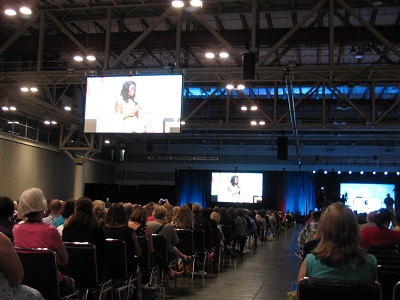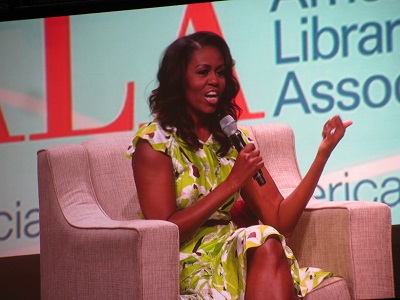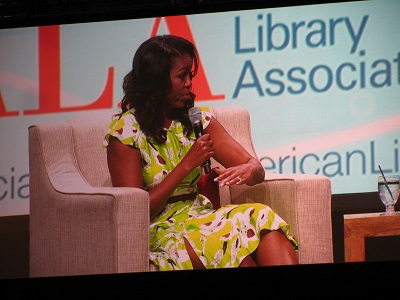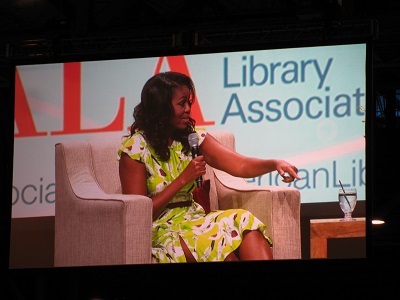ALA Annual Conference 2018 – Considering ALL Children
The final session I attended at ALA Annual Conference 2018 in New Orleans before catching my flight was ALSC’s Charlemae Rollins program, with the title: “Considering All Children: A New Ideal in Evaluating and Engaging Around Books for Youth.”
The speakers were Margarita Engle, Dr. Debbie Reese, Ebony Elizabeth Thomas, and Jason Reynolds. The moderator was Edith Campbell.
In the introduction by Nina Lindsay, we learned that a character in a picture book is four times more likely to be a dinosaur than a Native American child.
Ebony Thomas:
Stories matter. Lived experiences matter.
[She referred to the book Stories Matter: The Complexity of Cultural Authenticity in Children’s Literature, by Dana L. Fox and Kathy G. Short. ]
Do we really give all stories the same weight? Do all stories matter?
A perennial attack: What really matters is whether children can read.
But if they can’t see themselves in books, what is their incentive to read?
She referred to a TED talk by Chimamanda Ngozi Adichie: “The Danger of a Single Story.”
Children are impressionable; the stories they hear matter.
Children are vulnerable; the stories they hear matter.
The statistics on multicultural literature have not moved enough.
Is diversity enough? What do children learn about non-white children?
Look at an article “The Metaphors We Read By.”
Remember there’s no such thing as objectivity in children’s literature.
Dr. Debbie Reese
She called her talk “The United States of Whiteness.”
“We the people” wasn’t talking about people of color.
The Little House books represent making America great. Consider ALL children.
This criticism is not new; social media makes it more visible.
William Apess, a Pequot man who lived 1798 to 1839, wrote A Son of the Forest in 1829. When he was four years old, he was placed with a white family. When he was six years old in school, he learned to dislike who he was. When he was eight years old, he saw a white man with darker skin, and he was afraid.
We believe books can inspire us. But who is “us” in that sentence?
“The only good Indian is a dead Indian.” is quoted three times in the Laura Ingalls Wilder books. Arguments in favor of the books say, “They were a product of her time.” and “That’s what they thought back then.”
Native people did not think that back then.
18 books published since 2011 have characters in the books talking about Little House on the Prairie. In 2003, CNN reported a POW in Iraq saying, “We were like Custer.” American Sniper, by Chris Kyle, uses “injun” and “savage” over and over.
Whiteness in “We the people” said “not you.” Whiteness in stories shapes how we view the “other.” What is whiteness in the US doing to children in 2018?
Margarita Engle
She called her talk “The Nature of Cages.”
This week, we’ve watched images of caged children. We don’t know their names.
Own voices – It looks different from the inside.
She has a project – “Bridges, not Walls: Poetry for Peacemaking.”
How can we speak of peace when we’re angry? Children are the only possible peacemakers of the future.
Compassion is the seed of peace. Listening leads to compassion.
Most Latino characters in children’s books are written by whites. Avoid assumptions and stereotypes. Don’t sprinkle in characters with Hispanic names but no background. “We’re real people, not characters.”
Latinx people have countless reasons to be in the US. “In other words, we’re complex.”
“Bridges reach. Walls separate.”
Words must be honest. Assumptions aren’t honest.
Ignorance is a wall; knowledge is a bridge.
Marketability isn’t a good reason to choose your story.
Her books are about people left out of history.
Jason Reynolds
He recently spoke at a business conference, where they kept saying, “Numbers don’t lie.” That may be true, but that does not mean that numbers tell the whole truth.
If that were true, he wouldn’t be here today. Numbers say black boys don’t read.
Ask proper questions. Is it that black boys don’t have books to read?
Obese people who live in food deserts don’t hate to eat!
Jason Reynolds writes three books a year because he’s terrified. He knows at any given moment, it can all go away. He was taught to work twice as hard to get half as much.
Why do we have to write about black pain? “I wish we didn’t!”
There’s a cost that comes with working as a writer.
He believes in Humility, Intimacy, and Gratitude.
His books are for everyone, but he writes with black kids in mind.
Your job is to write timely work. “If you’re teaching Ghost 40 years from now, we’ve failed.” Create springboards.
Black and brown kids don’t need our salvation. Thank them for coming into the library.
It’s dangerous to eliminate adults. Show kids: There might just be adults who care.
Panel Discussion
EC: We need stories. Not just with diversity sprinkled into them. What does it mean to be American? Kids need to know they’re real. Diversity has become a checklist.
What does it mean to decolonize children’s literature?
First, acknowledging that there were advanced nations here before the U.S.
A stance of humility is key. Be constantly learning. What criteria would the people you write for use in judging books?
ME: Poetry is a good way to connect with young people. When she reads poems to kids, they read poems back.
JR: He’s writing for kids like the one who wrote to him who had committed a murder.
Just be a human being! Actively work to be empathetic every day.
He wants to be honest. Kids connect to honesty and authenticity. Kids always know when adults are BS-ing.
False question: Who can decide what’s “literature”? When stories don’t look a certain way, they’re dismissed.
ME: Her fiction is seen as nonfiction and vice versa.
[Here the recommendation was made to donate to REFORMA’s Children in Crisis Project.]
Poetry is inviting for reluctant readers.
DR: Decolonizing means acknowledging your ignorance and going beyond it.
ET: Think about the white viewer gaze.
Become more precise in your geography. “America” is many places and countries.
Why should people who have no incentive care about any of this? We are all interdependent.
